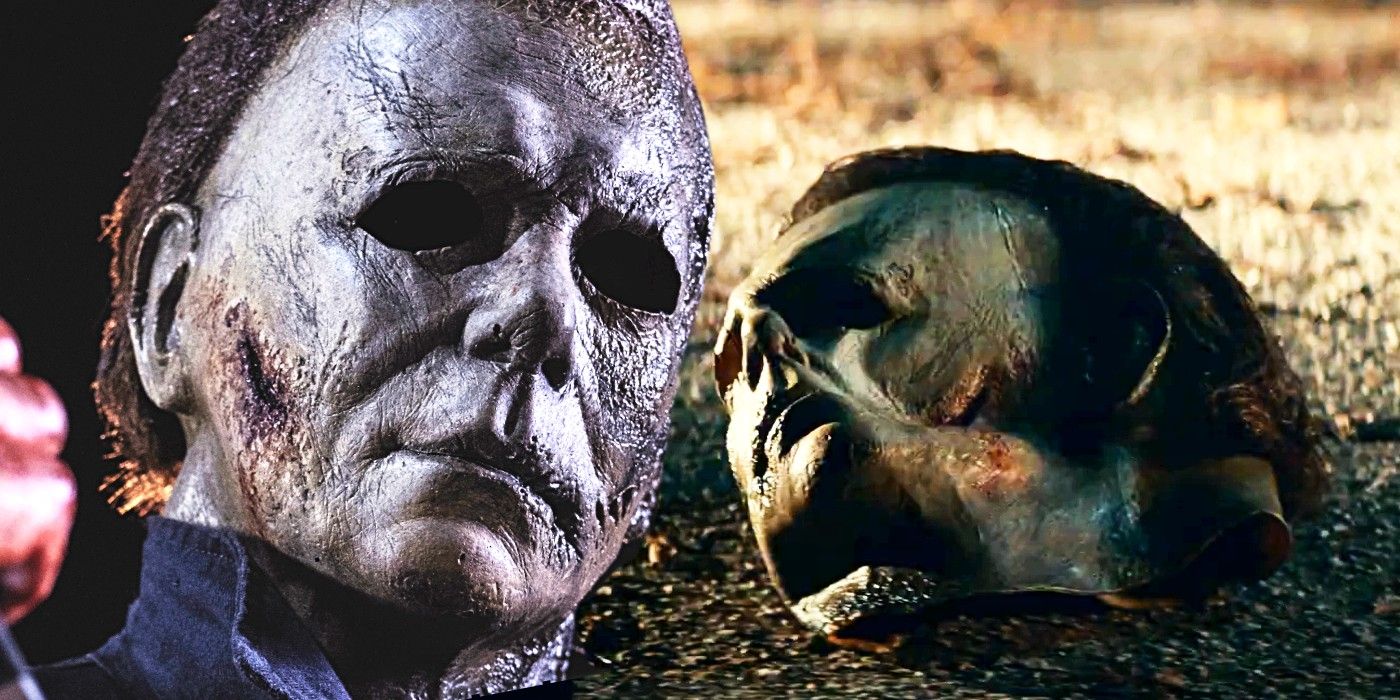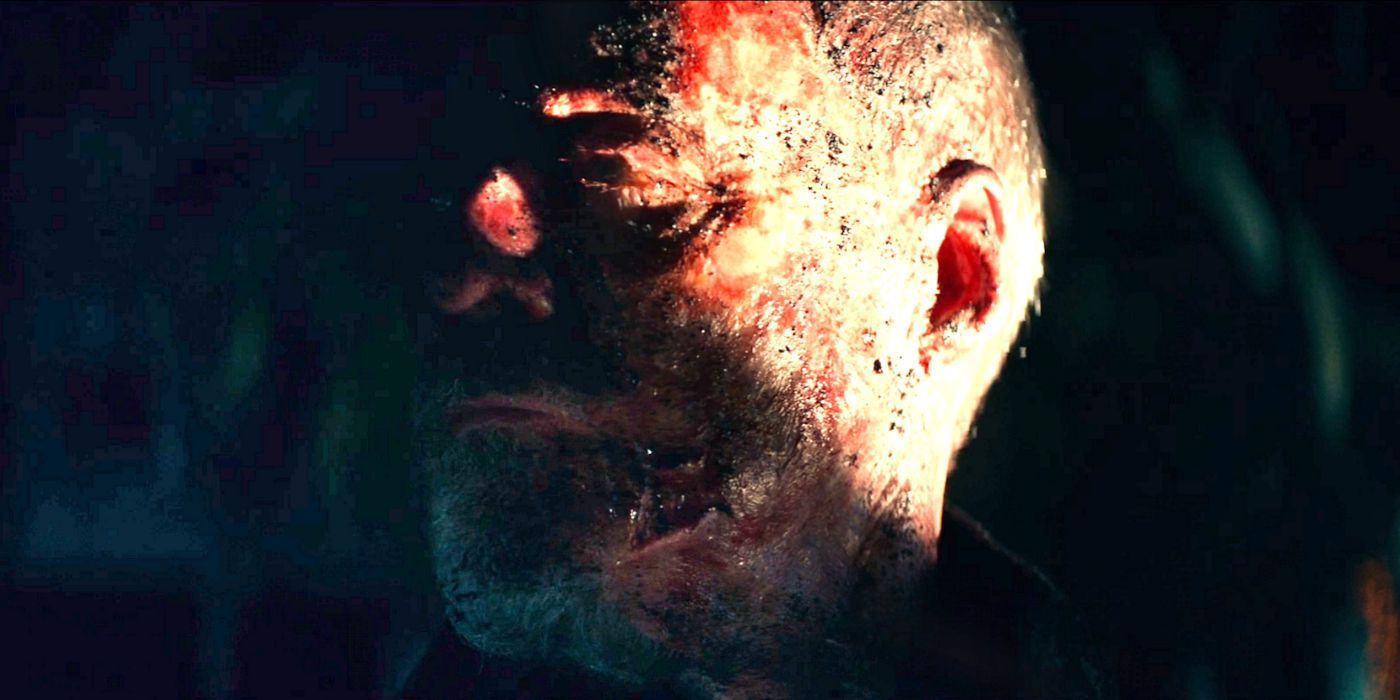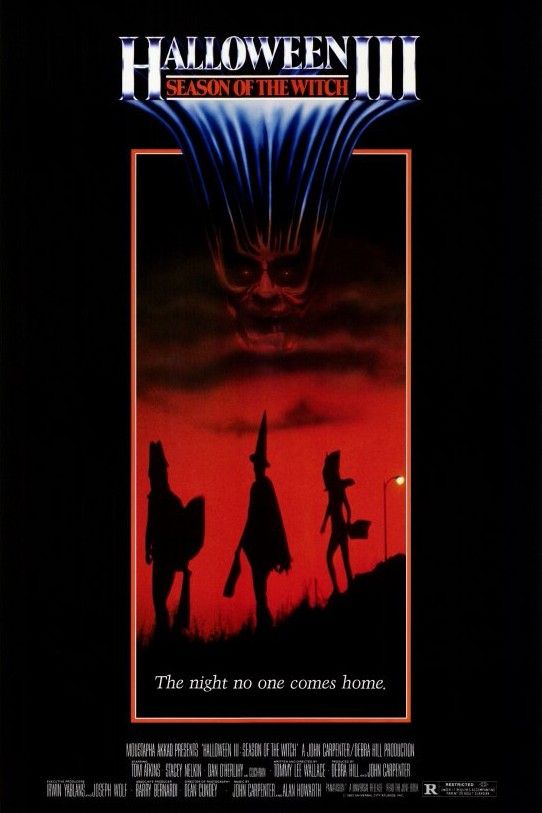The critically divisive Halloween Kills followed through on its promise of unmasking franchise villain Michael Myers, but the sequel’s much-vaunted moment fell flat for a variety of reasons. Since the hulking murderer began stalking teens in horror legend John Carpenter’s original Halloween, Michael Myers’ mask has been almost as famous as the mute monster himself. Fashioned from a William Shatner mask turned inside out and painted white, the disguise gave the Halloween franchise villain an uncanny appearance while also hiding his true face from audiences.
It has always been an unspoken rule that the Halloween series kept Michael’s face a mystery, and attempts to unmask the character have never been particularly successful in the past. The original Halloween showed Michael’s face very briefly but kept it mostly obscured, while the fourth sequel featured a goofy unmasking sequence most fans would rather forget existed. Meanwhile, director Rob Zombie’s choice to unmask Michael at the end of his reboot sequel Halloween 2 was one of many moments that reviewers criticized for rendering the implacable killer too human.
In 2018, director David Gordon Green’s successful Halloween reboot rewrote the chronology of the franchise, effectively erasing Zombie's remake and the original sequels from existence. This direct sequel picked up decades after the original Halloween and saw Michael embark on another killing spree after dozens of years institutionalized while an older Laurie Strode prepared to take on her old nemesis one more time. The movie’s sequel Halloween Kills promised to upend the franchise’s rules even more by unmasking Michael Myers. To the surprise of many fans, Halloween Kills did go through with this risky maneuver. Visually, the scene went as well as it could have, but Halloween Kills was still unable to successfully unmask Michael because of how impossibly lethal the character proved in the new movie.
Like fellow masked slasher villain Jason Voorhees, Micheal Myers became something of an indestructible force of evil when he donned his iconic mask. However, unlike Jason, Michael is not canonically supernatural (according to the Halloween reboot timeline, at least). However, the events of Halloween Kills posited Michael as an almost certainly superhuman, utterly unstoppable killing machine. The character survives fires, beatings, stabbings, and shootings that no normal human could withstand and is still able to kill with impunity, making Michael Myers appear to be something more than merely human. However, unmasking the character (however briefly) confirms that Michael is just a normal person under the mask, a contradictory idea that can’t be squared with the sight of him killing dozens of people after sustaining serious, life-threatening injuries.
The sight of Halloween Kills unmasking Michael Myers could only have been effective if the villain had then died at the hands of the mob. Instead, Halloween’s franchise villain racks up his highest body count even after being revealed to be a relatively normal sixty-something, and Halloween Kills’ ending becomes even harder for viewers to buy. If Michael’s face revealed him to be something more than human, his extraordinary strength and endurance might have made sense and, if his face reveal had led to his death, the revelation that he was an ordinary human would have carried weight. As is, Halloween Kills wasted its unmasking by making the moment a contradiction that added nothing to the iconic character’s appeal.



